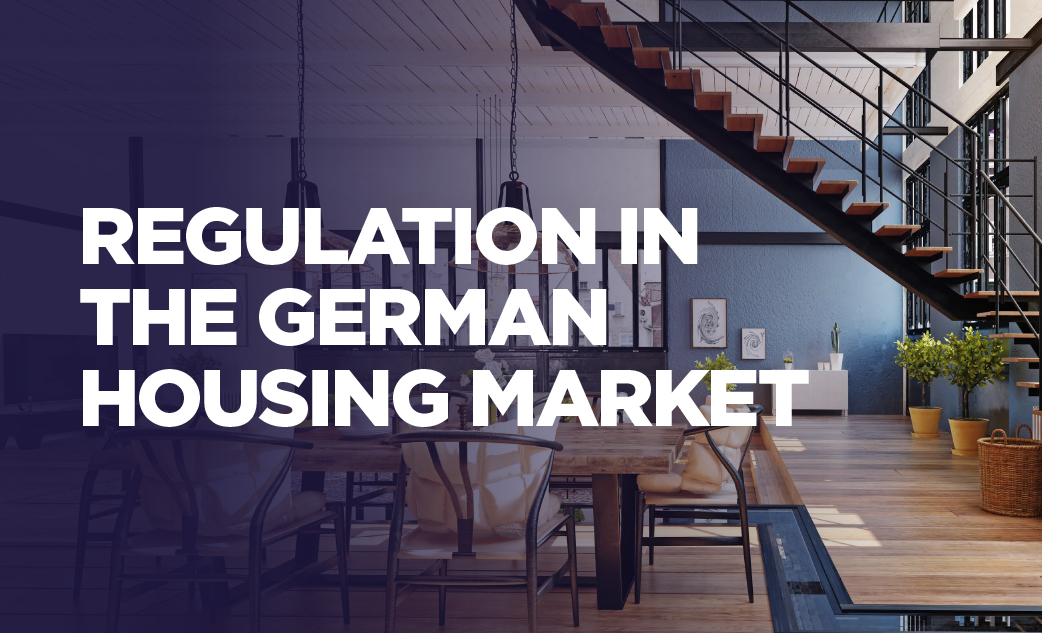- Slower rent price growth expected
- Affordability for both rent and purchase prices slightly improved but remains at low levels
- Significant differences in rent and purchase price developments across locations
- Transaction volume for multi-family houses increasing after a low point
Cushman & Wakefield, one of the largest real estate consulting firms worldwide, has published an overview of the developments and outlook for Germany's top seven housing markets (Berlin, Düsseldorf, Frankfurt, Hamburg, Cologne, Munich, and Stuttgart) for the first time. Both rental and purchase prices remain at a high level, albeit with different trends. While purchase prices for owner-occupier flats had been declining for one and a half years, slight price increases are now visible again. In contrast, the pace of rent increases has slowed.
Rent Increases Slow Down
The trend of rising asking rents for apartments continued in 2024. However, the growth rates in the second half of the year were lower compared to the previous year and the first half of 2024. Annual median rent growth, which stood at 8.4 per cent at the end of 2023 and around ten per cent in the first half of the year, dropped to just 5.5 per cent in the fourth quarter of 2024 compared to the previous year. The analysis of changes in individual quarters compared to the respective previous quarter re-veals some notable fluctuations. In the third quarter of 2024, there was even a slight decline in advertised rents of 0.5 percent. However, in the fourth quarter, rent rose again — albeit moderately—by 0.9 per cent.
Jan-Bastian Knod, Head of Residential Investment Germany and Head of Healthcare Advisory at Cushman & Wakefield: "In the short term, we expect a further slight slowdown in rental price growth. Our expectation is based on the weak economy, the significantly cooling labor market, and the declining immigration."
Cooling of Rent Price Growth in Berlin and Munich
In the rental price comparison of the top seven markets, Munich ranks highest for both new builds and existing properties. The gap to the second-ranked market (Frankfurt) is significantly higher for existing buildings, exceeding 30%, compared to new builds, where it stands at 7–8% relative to Hamburg and Berlin.
The analysis of rental growth rates reveals some regional differences: While Frankfurt, Hamburg, and Düsseldorf still showed significantly increasing growth rates at the end of 2024 compared to the previ-ous year, the percentage increase in Berlin and Munich decreased significantly year-on-year. Only in Stuttgart did rental price growth remain almost unchanged at +4.1 percent (Q4 2023 compared to Q4 2022: +3.9%).
No Relief in Sight for Tenant Households
"We expect these burdens to remain at a high level and tend to increase slightly', says Nicole Hock, Team Lead Residential Valuation at Cushman & Wakefield. The expert cites the economic slowdown in wage growth compared to the expected rise in rental pric-es as the main reason. Due to the shortage of available housing, rental increases are likely to outpace wage growth, which could further raise the average financial burden on tenant households.
Purchase Prices Rise Slightly in the Top 7 Cities – With Significant Regional Variations
Between the fourth quarter of 2022 and the first quarter of 2024, median asking prices for owner-occupied flats (both new builds and existing properties) across all 7 cities fell by a total of 7 per cent. By the end of 2024, sellers could already expect rising purchase prices again: in the fourth quarter of 2024, prices were 0.8 percent higher than a year earlier.
Munich Still Has the Highest Property Prices Despite a Sharp Decline
The comparison of the metropolises reveals several different developments. The median asking prices in Frankfurt and Stuttgart remained below the previous year's level in the fourth quarter of 2024 (-2.1 and -1.6 percent). In the other five markets, slight to significant increases compared to the previ-ous year were recorded. In Cologne, prices have been rising steadily from quarter to quarter for an entire year, with an annual increase of nearly 7% in the cathedral city. The price dips in 2023 were relatively mild in Cologne, Berlin, and Hamburg. The asking prices in these cities fell by around 4 percent in Berlin and 7 percent in Cologne and Hamburg between 2022 and 2023. In contrast, price drops were more pronounced in Stuttgart, Düsseldorf, Munich, and Frankfurt, where median property prices reached their lowest point only in 2024. By then, they had fallen 13% in Frankfurt and Munich, 17% in Stuttgart, and 18% in Düsseldorf from their peak levels. In Frankfurt, the fourth quarter of 2024 marked a new low in the current price cycle.
In the city ranking of property prices, Munich remains by far the most expensive market, both in the existing and new construction segments. When it comes to top-end purchase prices for new builds, Hamburg ranks second. The median new builds purchase price is, however, the second highest in Stuttgart, and in the median for existing buildings, Frankfurt is in second place.
Property Prices Continue to Put Households Under Pressure
Affordability remains particularly poor for new-build properties, with mortgage interest and repayments accounting for an average of 55.3% of net household income in model calculations for an 80 m² owner-occupied flat. "Compared to 2023, the burden on income has decreased by nearly 7 percentage points due to falling prices, rising wages, and lower financing costs. For an existing property, the financial burden from mortgage payments has already dropped to 34.6%, making it slightly lower than in 2022", says Nicole Hock.
Upward Trend in Transaction Volume for Multi-Family Homes
The transaction volume (only asset deals) for the year 2024 was approximately 10 percent per cent higher than the previous year according to Cushman & Wakefield's projection based on data from the expert committees for the top-7. We expect a volume of approximately 7.6 billion euros.
"Although the residential investment volume has not yet returned to pre-interest rate hike levels and remains below transaction figures from ten years ago, even without adjusting for inflation, the stabilisation and slight upward trend indicate that the market has largely absorbed the interest rate shock. Due to strong fundamental data and the positive demand development in the rental market, more transaction processes are being initiated once again", says Jan-Bastian Knod.
Despite challenging market condition, several major transactions were also completed, including the sale of the newly developed project Konnekt in Berlin and the partial sale of the newly constructed project Welfengarten with 320 apartments in Munich Au-Haidhausen.
The average prime yield for multi-family homes (institutional products) across the Top 7 cities has remained stable at 3.91 percent for over a year. The range extends from 3.70 percent in Munich to 4.00 percent in Düsseldorf, Cologne, and Stuttgart.
"The still high yields on long-term government bonds have yet to provide tailwinds for falling yields in the multi-family housing sectors," says Knod.


